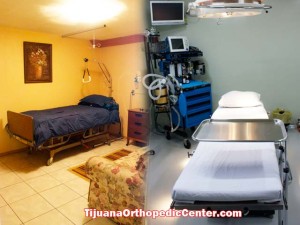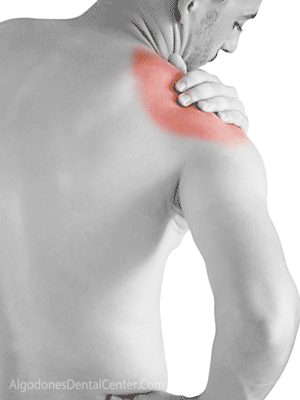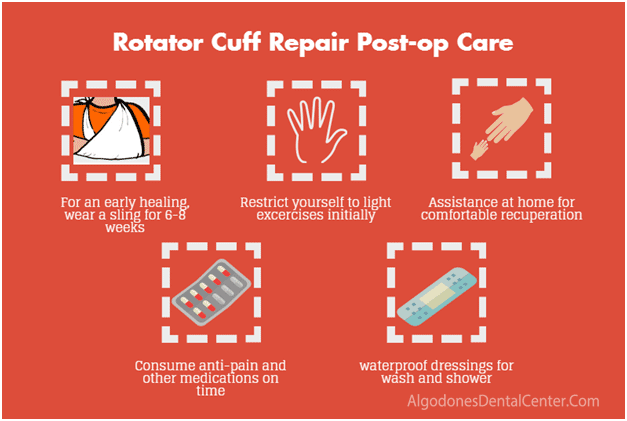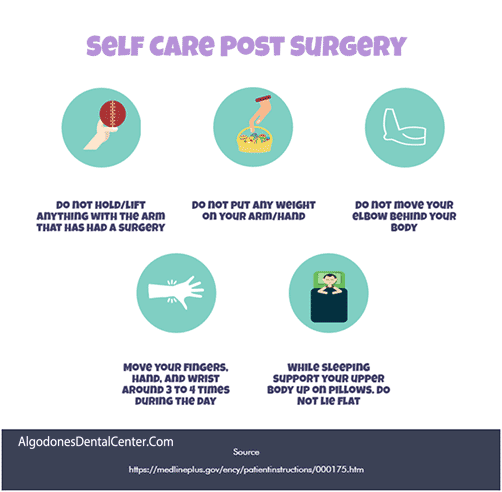Rotator Cuff Repair
More than 30 Years of Experience
Save 60-80% on US Prices
The surgery is usually recommended when the injury is severe (a complete rotator cuff tear) or all non-surgical treatments have failed to heal the shoulder.
A tear of the rotator cuff is an injury in which the tendons are pulled off often leading to pain and weakness in the shoulder and upper arm requiring surgery to cure.
Sometimes even lifting your arm becomes a problem accompanied with limited movement of the wrist.
Why Tijuana?
- Many Americans choose to have shoulder surgery in Tijuana because of its proximity to the US; it is less than 15 miles from San Diego, California.
- You can SAVE almost 60-80% on your rotator cuff surgery in Tijuana as compared to the US prices.
- Our LEAD orthopedic surgeon and his surgical staff are highly skilled and experienced.
Who Will Perform Your Surgery?

Orthopedic Surgeon – Dr. Eliseo Mora Sanchez will be performing your surgery. He has more than 30 years of experience and is currently serving as General Director at leading orthopedic center in Tijuana. He is an international member of the prestigious American Academy of Orthopaedic Surgeons (AAOS) for more than 15 years now.
Some Painful Statistics
Rotator cuff tears increase with age and are present in approximately “25% of individuals in their sixties, and more than 50% of those in their 80s”1. In the United States alone, rotator cuff tears affect at least 10% of those aged above 60. That equates to 5.7 million people, with an estimated 75,000–250,000 of them going for surgery year1.
What is Arthroscopic Rotator Cuff Surgery?
Arthroscopic rotator cuff repair is a minimally invasive procedure to reattach the rotator cuff tendon tears. Small incisions are made in the shoulder and the surgeon operates using an arthroscope and small instruments.
Benefits of Arthroscopic (Keyhole Surgery) Rotator Cuff Repair are:
- Less discomfort and complications post surgery
- Shorter hospital stay
- Less post-operative pain and inflammation
- Quicker return to work and sports
- Less scarring than an open surgery
What Happens During the Consultation Phase?
During the consultation phase, the bone and joint specialist at Tijuana Orthopedic Center (TOC) will perform a comprehensive physical examination to make sure you are in good health before undergoing the rotator cuff repair surgery.
- The doctor may ask you to undergo blood tests or other diagnostic tests.
- Let your doctor know of all medications, whether prescribed or over-the-counter, that you are taking.
- It may be necessary for you to stop some medications prior to the procedure; so notify your doctor if you are taking any anticoagulant (blood-thinning) medications.
- A meeting with the physical therapist prior to your surgery to discuss rehabilitation will be arranged.
For more information, fill our FREE estimate form.
What Does the Procedure Involve?
A rotator cuff repair involves stitching the torn tendon back to the Humerus (arm bone). This surgery may be either through an arthroscopy or open. If performed as a keyhole surgery, an arthroscope will be inserted through the incisions. The incisions are stitched by surgical staples and a sterile bandage is applied on top of it.
- After the surgery, a physical therapist will be responsible for smooth and successful recovery by recommending certain exercises. A typical rehabilitation program may be as follows:
- As soon as anesthesia wears off, the patient may be asked to do some light exercises that involve flexing the wrist, elbow, and hand.
- With the support of the physical therapist, light exercises may be started 4 to 6 weeks of immobilization post surgery4.
- Strengthening exercises are taught after a few months4.
What is Mini Open Rotator Cuff Repair?
During the Mini Open Rotator Cuff Repair, the surgeons are able to examine the damage and repair the torn tendons of the rotator cuff by making a very small incision (about three to five centimeters) above the shoulder.
In this procedure, the shoulder joint isn’t detached; instead the damaged tissue is removed by an arthroscope.
Success Rates
According to a latest study (2016) by Peter Edwards, Jay Ebert and colleagues, arthroscopic and open repair of the rotator cuff have shown “satisfactory outcomes for pain and shoulder function”, as well as success rate, without an additional surgery, of 94% at five years and 83% at 10 years, with significantly improved post-operative clinical outcomes1.
FAQ
I have stiffness; is physical therapy good for me?
Physical rehabilitation plays a critical role in surgical treatment of a rotator cuff tear. Poor patient cooperation postoperatively between 6-12 weeks can lead to re-tears and failure4.
Rotator cuff tear is often accompanied by deterioration of the muscles around the arm and shoulder. Therefore, physical therapy is essential to regain strength and improve shoulder functions. Complete healing after surgery may take quite a few months.
According to a study published in the year 2014 by Stephen A. Parada et al., a majority (67 %) of the patients had their stiffness resolved within the first 5 months postoperatively with physical therapy alone, without the need for a second surgery3.
Does smoking influence the success of rotator cuff repair?
Smoking could consequently increase the number of surgical procedures in these patients4. According to a study published in the year 2015 by Senthil Nathan Sambandam and colleagues, “high frequency smokers had type 2 tear and smoking negatively affects vascularity of tendons.”
What kind of exercises can I do?
American Academy of Orthopedic Surgeons (AAOS) recommends warming up and stretching before starting with exercises such as:
- Crossover arm stretch
- Passive internal rotation
- Passive external rotation
- Pendulum
- Sleeper stretch
What about driving and going back to work?
Most people return to work 3-4 months after rotator cuff tear surgery. You can drive once your sling has been fully removed and your physiotherapist and doctor give you a clean chit.
Will I be given anesthesia?
Usually arthroscopic rotator cuff repair is performed with a regional block. You will be sedated and asleep throughout the operation.
How many days will I be in the hospital?
At TOC, we recommend our patients to arrive one day before the surgery and stay a night at the clinic following the procedure.
Also, it would be advantageous if a patient stays in 1-2 days in Tijuana (hotel) for follow-up. So, the total recommended stay in Tijuana would be 3-4 days.
What other services do you offer?
Apart from rotator cuff repair, we also offer carpal tunnel surgery, ankle fusion, and a host of other orthopedic solutions.
Can I get a medical loan?
To finance your surgery in Tijuana, you can also get a medical loan.
Notify your doctor if you notice anything unusual like any of the following:
- Increased pain around the shoulder
- Swelling, bleeding, or other drainage from the incision site
- Fever of 101°F (38.3°C) or higher
- Numbness in the affected arm or hand
Post-Op Self-Care Tips
Post surgery your arm will be in a sling; be sure to take the following precautions:
- Till the time your arm is in the sling be sure to not indulge in heavy exercises2 or any kind of weight lifting unless your surgeon tells you. You can loosen it only at the wrist strap and straighten the arm at the elbow. Be careful not to move your shoulder when you do this.
- Restrict your arm and wrist to limited movements.2
- Don’t move your arm over your head.2
- Raise your upper body while sleeping.
- Use waterproof dressing while taking bath.
- Consume antibiotics and painkillers as recommended.
References:
- Edwards P, Ebert J, Joss B, Bhabra G, Ackland T, Wang A. EXERCISE REHABILITATION IN THE NON-OPERATIVE MANAGEMENT OF ROTATOR CUFF TEARS: A REVIEW OF THE LITERATURE. International Journal of Sports Physical Therapy. 2016;11(2):279-301. http://www.ncbi.nlm.nih.gov/pmc/articles/PMC4827371/
- https://medlineplus.gov/ency/patientinstructions/000175.htm
- Parada SA, Dilisio MF, Kennedy CD. Management of complications after rotator cuff surgery.Current Reviews in Musculoskeletal Medicine. 2015;8(1):40-52. doi:10.1007/s12178-014-9247-6. http://www.ncbi.nlm.nih.gov/pmc/articles/PMC4596187/
- Sambandam SN, Khanna V, Gul A, Mounasamy V. Rotator cuff tears: An evidence based approach. World Journal of Orthopedics. 2015;6(11):902-918. doi:10.5312/wjo.v6.i11.902. http://www.ncbi.nlm.nih.gov/pmc/articles/PMC4686437/





